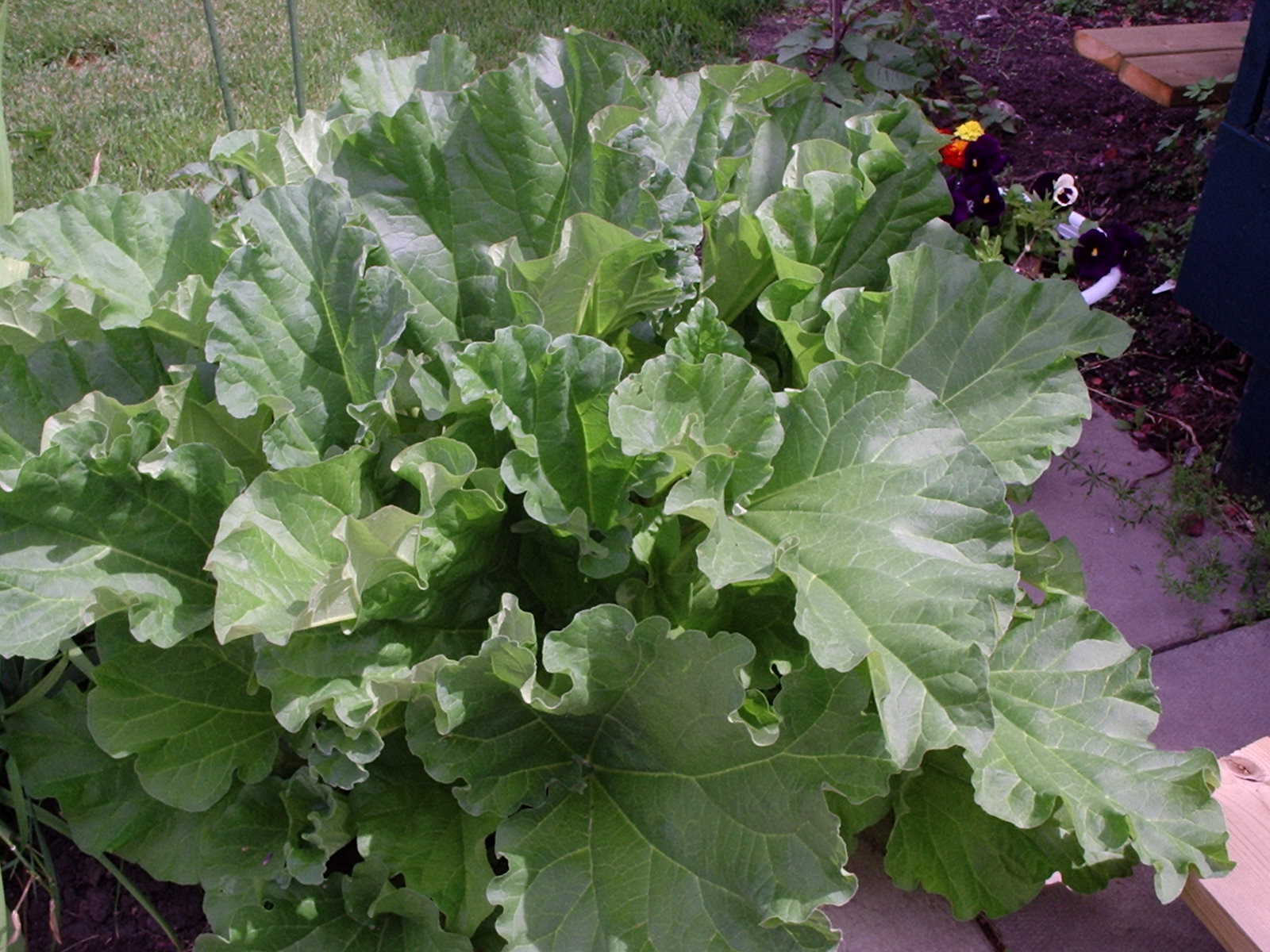Home
Our Loft
Quilts, Gifts, Decorating, Restin' & Relaxin', Pampering
Craftin' Room
Crafts for the
Kid in all of us
Special Occasions
Kids Fun Stuff
Heart of our Home
Recipes, Crafts, Cookbooks, Tips,
Readin' Room
Craft Books, Antiques and Collectibles, Gardening and more
From the Porch
Gardening
Helpful Tips
Products
General Store
Stroll the Aisles
Special Occasions
Crafts & Gifts
About Us Folks
E-Mail
Links
Contact Info
Comfy Country Creations
P.O. Box 10181,
Airdrie, Alberta
T4A 0H5
Phone: 403-912-2645
Fax: 403-912-0543
|
|
Quick Jump to Related pages
Growing Rhubarb
Forcing Rhubarb
Rhubarb Recipes
 RHUBARB
RHUBARB
(Rheum rhabarbarum)
Rhubarb as we know it, has relatives - R.palmatum and R.officinale. Both of the relatives were highly sought
after and valued by ancient customs as a laxative. Their recorded use show up around 2700 BC in China. It is
thought that roots were probably brought to Europe via the Silk Route and by the end of the 13th century, Marco
Polo reported it growing in China. Can you imagine anyone claiming rhubarb mania? Historians claim that
Europe fit the description by the 18th century. Inside the borders of Russia, there was a trade monopoly happening
and not to be outdone, the British East India Company bought roots in China. Up to this point, the plants had
been used as a herb. It would appear that our rheum rhabarbarum became popular as a food by 1830 and stalks
were forced in order to be available year round in the farmer's markets of the time.
As many would believe, rhubarb is not a fruit, but a vegetable. It contains a good source of potassium
calcium and moderate amounts of vitamins A and C and is low in calories until you add sugar or ice cream! It likes
to be in fertile soil and will produce for many years with minimum care. It is hardy to Zone 3 but it will survive in
colder zones if mulched. It does like a minimum cool period over the winter with daily temperatures of forty degrees F.
Depending on the variety , the stalks can vary in color from green to deep red.
Rhubarb does go to seed; however, because these seeds usually don't produce plants similar to their
parents, it is recommended to propagate with pieces of root that include buds. These are often called crowns and
are available from several outlets including family and friends. Keeping in mind that rhubarb can grow more than
three feet tall and may spread four to five feet; you should consider carefully where it is to call home. It likes
full sun with fertile, well drained, slightly acidic soil. It is not too crazy about heavy clay or poorly drained areas.
Although, having said that, I have seen it grow just about anywhere! To plant your new vegetable, you will need a
hole that is one and a half to two feet deep and approximately two feet in diameter. In the bottom of the hole, place
six inches of compost or well rotted manure. If you do live in an area that has lots of clay, it is recommended to
add some coarse sand to the mixture going into hole. Leaving a depression for the crown, fill the hole with a compost/topsoil mixture. Set the crown into the hole and cover the buds with an inch of soil. Water. Planting deeper may cause long
spindly stalks. To keep weeds under control and soil moist, mulch with a mixture of compost with straw or shredded
leaves mixed in.
Your plant will not disappoint you if you keep the soil moist but not soggy. Harvesting in the first year
of planting is not recommended. This will permit the rhubarb to devote all its energies to developing a good root
system. The second year, pull only a few stalks. Spread this harvest out over a few weeks to allow the plant
to continue growing and not go into shock. The third year, much like the asparagus plant, will be the year to
harvest continually. Harvesting more than half the plant at one time may cause production to suffer; and there is a
technique to pulling your crop! Cutting the stalks with an knife or other sharp object leaves open wounds
that are susceptible to disease. For best results, grasp the stock at the bottom and pull upward slightly twisting.
With on-going harvesting, regular moisture either from Mother Nature or the garden hose you should have rhubarb through
to the fall.
You may enjoy nibbling on the stalks straight from the garden or try one of the various
recipes we have for you in our Kitchen. Be sure to read through the recipes we have found in Pages From the Past.
Rhubarb can be stored in the fridge for up to two weeks if it is wrapped in a paper towel and sealed in a
plastic bag. If freezing your harvest, keep in mind that the texture and flavor will not be quite the same as
freshly pulled; however, it will be an added treat during the winter months. To have fresh rhubarb all year,
you may want to try Forcing Rhubarb.
NOTE: Rhubarb leaves should not be eaten as they contain high amounts of oxalic acid. You can compost
them and add them to the mulch around your plants.
Browse all our Garden Pages
|